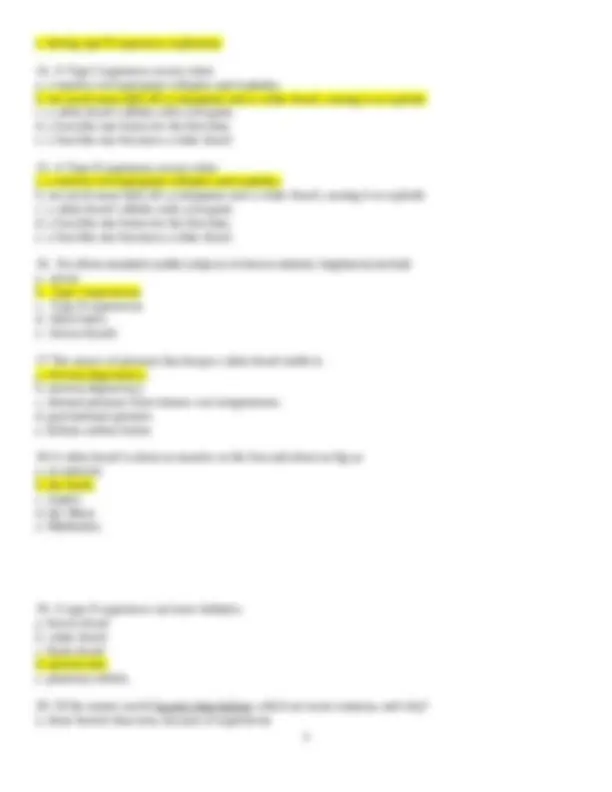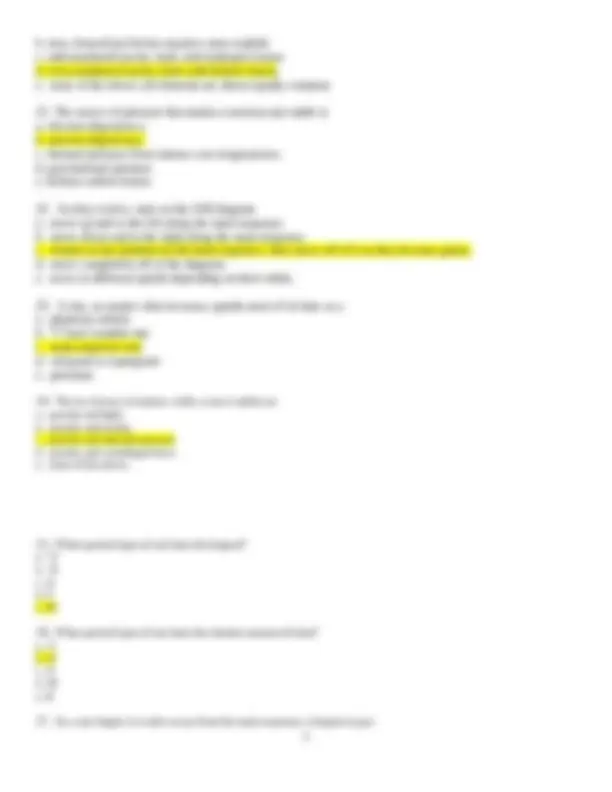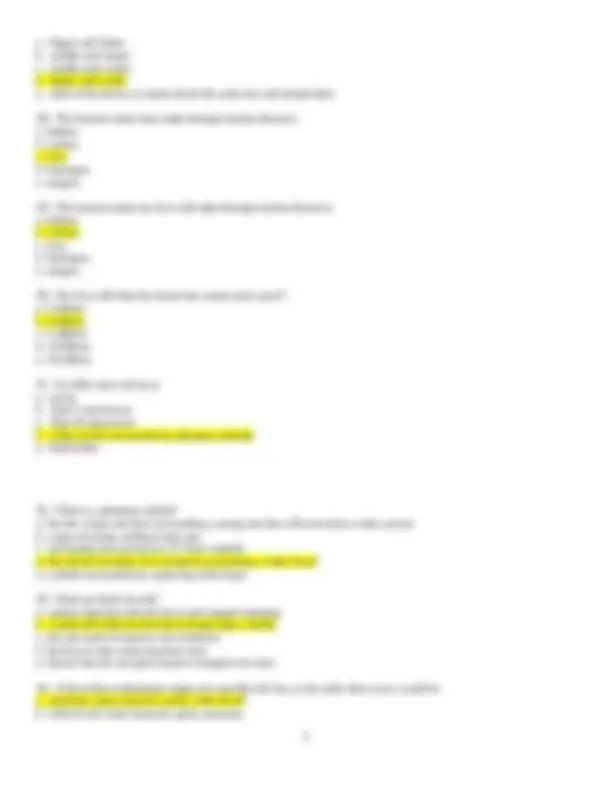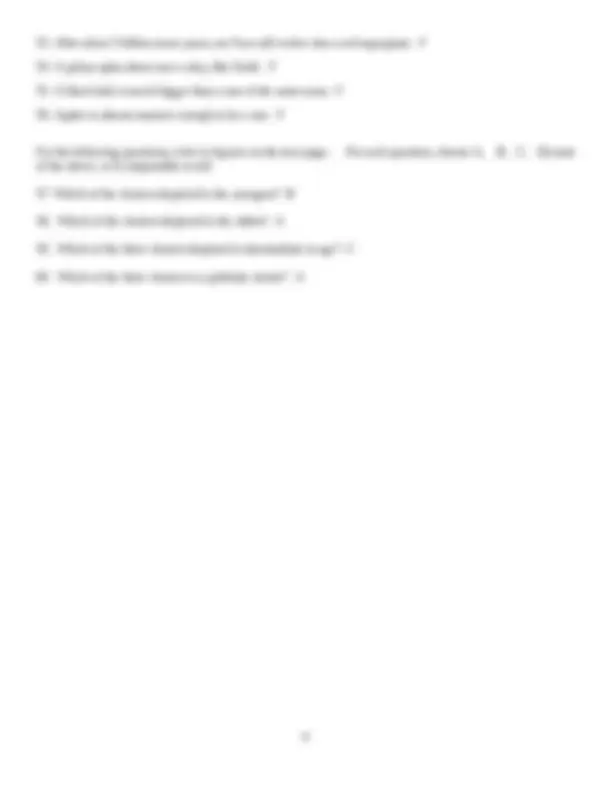






Study with the several resources on Docsity

Earn points by helping other students or get them with a premium plan


Prepare for your exams
Study with the several resources on Docsity

Earn points to download
Earn points by helping other students or get them with a premium plan
Community
Ask the community for help and clear up your study doubts
Discover the best universities in your country according to Docsity users
Free resources
Download our free guides on studying techniques, anxiety management strategies, and thesis advice from Docsity tutors
Intro to Astronomy Exam 3 questions with answers
Typology: Exams
1 / 8

This page cannot be seen from the preview
Don't miss anything!





Exam III Physics 1302
b. iron, formed just before massive stars explode c. odd-numbered nuclei, built with hydrogen fusion d. even-numbered nuclei, built with helium fusion e. none of the above; all elements are about equally common
a. bigger and hotter. b. smaller and hotter. c. smaller and cooler. d. bigger and cooler e. none of the above; it retains about the same size and temperature.
e. nothing.